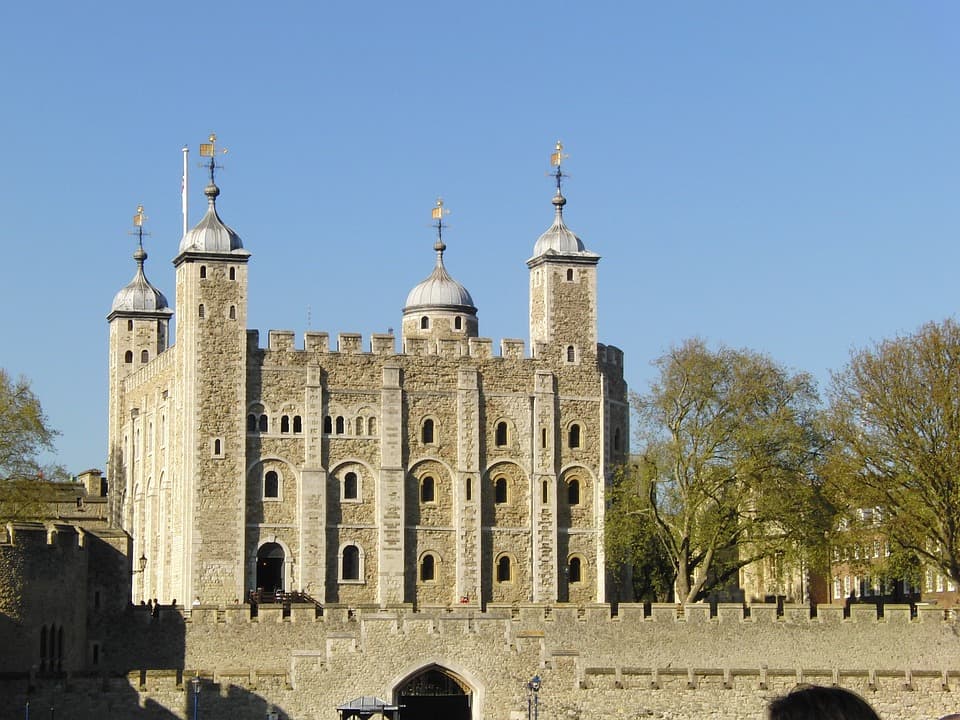
Located on the north bank of the River Thames, the Tower of London, officially titled His Majesty’s Royal Palace and Fortress of the Tower of London, is a historic castle which was founded in 1066 as part of the Norman Conquest.
The Tower of London is a pre-eminent part of English history and is one of the country’s most popular tourist attractions today. But what do we actually know about this historic monument? Here, we have some fascinating facts about the Tower of London which you may not know.
William the Conqueror built the Tower
In order to proclaim his royal power and defend himself, William the Conqueror built a stone fortress which we now know as the ‘White Tower’. The stone used to build the tower was from France, and it took English labourers and Masons around 20 years to complete. Militarily, the Tower was the castle’s strongest point, however, it also provided accommodation for the monarch and their representatives and housed a chapel.
The Tower of London was used as a prison
The Tower of London was never intentionally built to be used as a prison, however, from 1100 to 1952, many people were imprisoned and even executed there. Ranulf Flambard, Bishop of Durham, was the Tower’s first prisoner, and he was also the first to escape by climbing through one of the Tower’s windows using a rope which was smuggled to him in a gallon of wine.
In 1941, Josef Jakobs was the last person to be executed at the Tower by a firing squad, and the Kray twins were the last prisoners of the Tower of London, having spent some time there in 1952. During its time as a prison, the Tower held multiple common thieves, religious conspirators, young princes and princesses, politicians, lords, ladies and archbishops, an even Kings and Dukes.
The Tower of London was actually London’s first Zoo
In 1235, Henry III was gifted three leopards by the Holy Roman Emperor Frederick II, and this inspired him to create a zoo at the Tower. Over the years, it became known as a ‘Royal Menagerie’ of wild and exotic animals, such as lions, tigers, elephants, kangaroos, polar bears and ostriches. The Duke of Wellington closed the menagerie in 1835, and the animals were relocated to London Zoo in Regent’s Park.
The Tower was heavily damaged during World War II
In 1940 during the Blitz, the castle was damaged by air-raid bombs. Fortunately, the White Tower went unscathed, however, several buildings were heavily destroyed and one of the towers completely collapsed. After the war, the damage was repaired, and it was quickly reopened to the public.
Ravens are kept at the Tower
Ravens have always been present at the Tower of London, but when Charles II asked for them to be removed for superstitious reasons, he was advised that they are there to protect the Tower and the crown, and if he was to remove them, great harm would befall the nation. Since then, at least six ravens have been kept at the Tower permanently. One of each of their wings is clipped to ensure that they do not fly away.
The Crown Jewels have been kept in the Tower for centuries
Royal Coronation apparel, or the ‘Crown Jewels’, have been locked in the Tower of London ever since the 17th century, although many people believe that they are in fact just replicas. There are also crowns, robes and jewellery held at the Tower, and the items are transported with guards to Westminster Abbey for the crowning of a new King or Queen.
It is said that the estimated value of the ‘Crown Jewels’ is in excess of £20 billion, based on the jewel’s worth and relation to the Monarchy, however, their actual value is priceless. They are also one of the most viewed objects in the UK, with it being estimated that over 30 million people have visited the Tower of London to see them.
The Tower of London is a World Heritage Site
In 1988, the Tower of London was designated as a UNESCO World Heritage Site. This was decided due to its prominent role in British history, as well as it being a remarkable example of Norman military architecture. The Tower has played numerous roles over the centuries, including a fortress, palace, prison, place of execution and more recently a museum for the public to visit and explore all year round.
To celebrate Her Late Majesty becoming the first British monarch to reach a Platinum Jubilee, a Silver Proof Five Pound coin was minted. Featuring coloured enamel flowers against a backdrop of the Tower of London, secure yours HERE.


